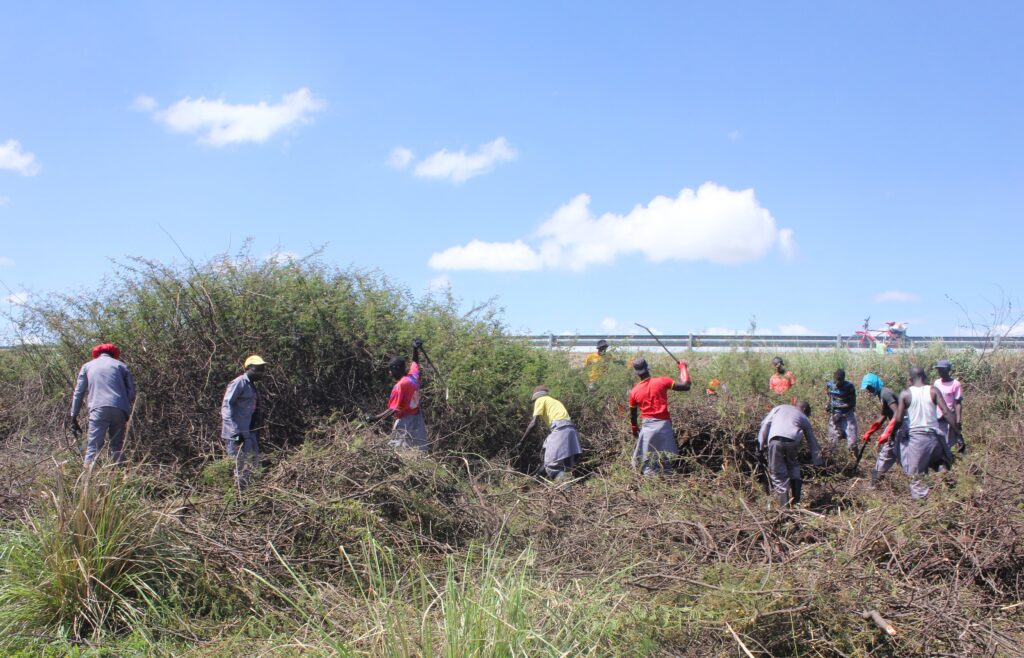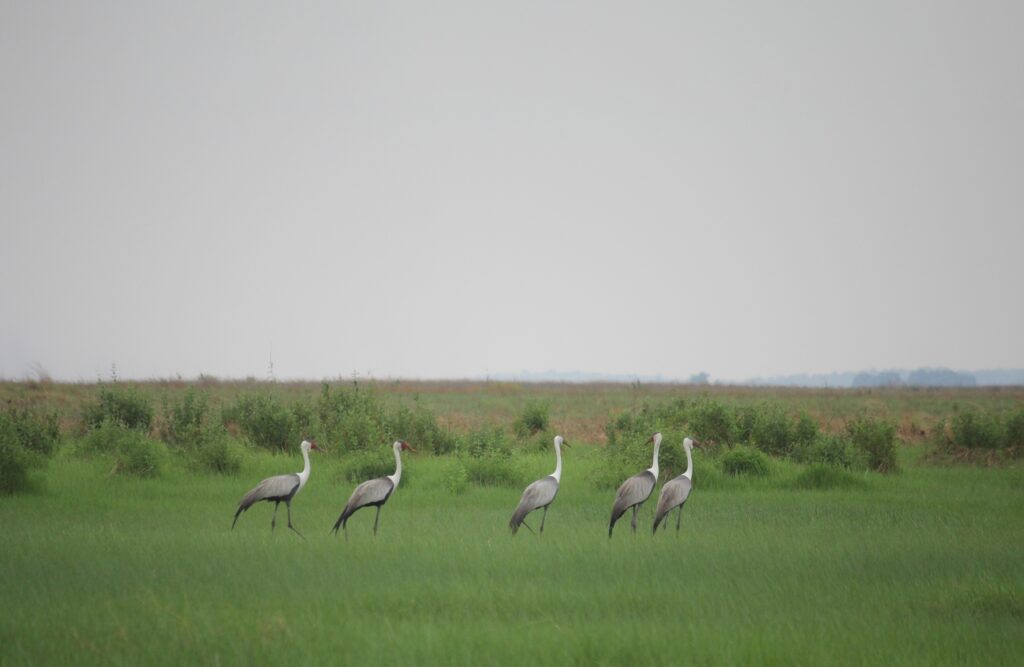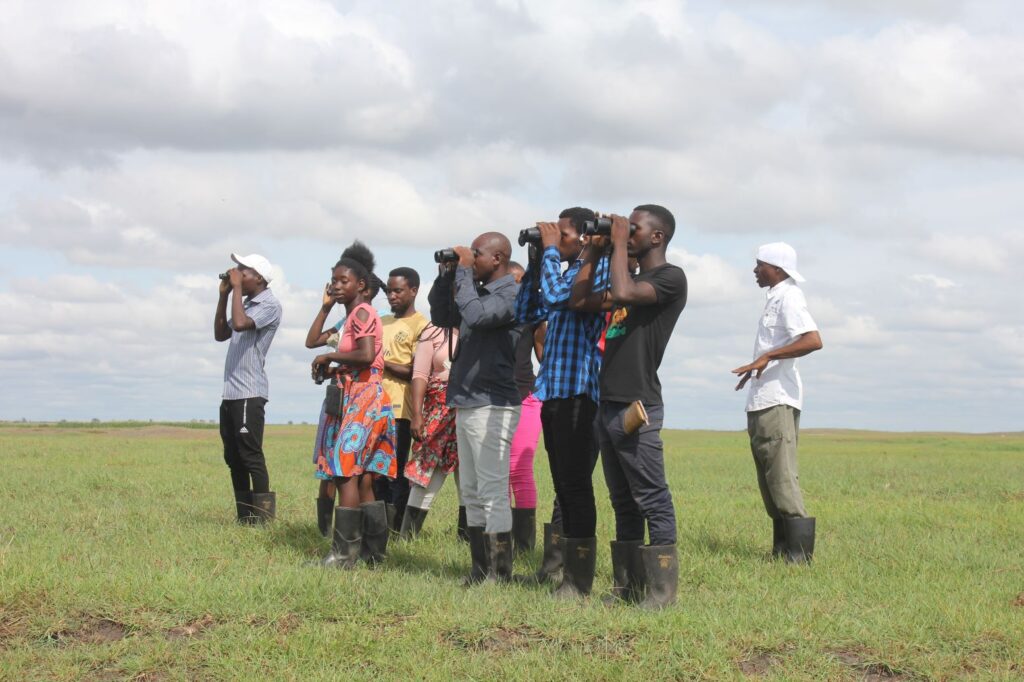Restoring the Barotse Floodplains, the Land of the Kuomboka.

Swithin Kashulwe – BirdWatch Zambia
It is nearly impossible to discuss the Barotse Floodplains without highlighting the significance of the Kuomboka ceremony, an iconic traditional ceremony in Zambia celebrated by the Lozi people in the Western Province. At the heart of the Barotse Floodplains is the Kuomboka ceremony, a symbolic and revered tradition that underscores the cyclical nature of life on the floodplains. The Kuomboka ceremony and the natural beauty of this region sums up a story that transcends time, inviting visitors to immerse themselves in a rich cultural heritage while marveling at the wonders of the landscape. As the waters rise, signaling the onset of the flooding season, the King leads its people to migrate to higher ground, a ritual known as Kuomboka, a spectacular ceremony that has endured through generations.
Witnessing the Barotse Floodplains during the flooding period is a truly awe-inspiring experience. The expansive waters transform the landscape into a watery network, with lush vegetation and the majestic Zambezi River. The King Lobosi Imwiko II bridge offers a panoramic view of the Zambezi River at its full capacity. Beyond its cultural significance, the Barotse Floodplains are a haven for biodiversity. The region boasts a remarkable array of flora and fauna, attracting the attention of conservationists worldwide. The delicate balance between human tradition and environmental preservation is evident, making the floodplains a cultural treasure and an ecological gem. In essence, the Barotse Floodplains stand as a testament to the enduring harmony between a community and its environment.
At BirdWatch Zambia, the Barotse Floodplains stand as a crucial Key Biodiversity Area (KBA), hosting a diverse range of avian species, some of which carry significance on the international stage e.g. the Wattled Crane. Nevertheless, the biodiversity of this area, as well as the well-being of the local communities, grapple with multifaceted challenges, notably climate change and the spread of invasive species, with crayfish and Mimosa pigra posing significant threats. Over the last 18 months, BirdWatch Zambia, in collaboration with WWF Zambia, has dedicated substantial efforts to curbing the proliferation of Mimosa pigra on the Barotse Floodplains. This undertaking presented its own set of challenges, requiring early morning starts as early as 3 am to catch the first bus for travel to the project site for monitoring purposes. Another significant challenge for me was the language barrier, given my lack of proficiency in the local language, Lozi. However, I am grateful for the constant support of Chinga, Kakoma, and other local community members, who served as my interpreters whenever their assistance was required.

Local community members employed as field workers cutting mimosa pigra. Photo by Swithin Kashulwe.
In a resounding success, the project aimed at clearing Mimosa pigra in the target area proved to be highly successful, particularly in the heavily infested region along the Mongu-Kalabo road. The initiative has exceeded expectations, achieving significant milestones in the battle against this invasive species. One of the noteworthy accomplishments of the Mimosa pigra clearing project is the successful clearing of a substantial portion of the target area within the Barotse Floodplains. By December 2023, the project had cleared over 9.5 hectares out of the initially intended 10 hectares. This remarkable progress goes beyond the project’s initial projections, considering the inclusion of areas that were accidentally omitted during the initial mapping but have now been successfully cleared. What makes this achievement even more commendable is the estimation that the total cleared area is set to surpass the 10-hectare mark. This not only underscores the efficiency of the project in addressing the invasive Mimosa pigra but also highlights the commitment and dedication of the project team. The invasive Mimosa pigra has long been a menace in the target region, posing threats to the local ecosystem and biodiversity. Its aggressive growth hampers native vegetation, disrupts water flow, and has adverse effects on the overall ecological balance. The initial clearance of Mimosa pigra in the Barotse Floodplains is a significant step towards restoring the natural habitat and safeguarding the region’s environmental integrity.
Furthermore, we engaged the local communities through awareness raising, and over 500 community members were engaged including women and the youth. These meetings focused on providing information about Mimosa pigra and its detrimental effects on any landscape it infests. Despite differing views, community members unanimously agreed that Mimosa pigra had little utility for them but posed threats to the landscape by encroaching on vital land for cattle grazing and agriculture. This also presented an opportunity to emphasize the Barotse Floodplains’ biodiversity importance, showcasing rich birdlife and promoting sustainable utilization for community benefit. This approach aimed to deepen understanding of the ecosystem’s value among locals.
The Mimosa pigra clearing project, in addition to its environmental success, positively impacted the local community by creating employment for 37 individuals. Beyond contributing to the initiative’s success, these community members gained steady monthly incomes, fostering economic stability. This exemplifies the interconnectedness of conservation and community well-being, highlighting the project’s enduring achievements and the dedication of all involved. Additionally, as part of our commitment to community empowerment, we trained 10 community members (4 females, 6 males) as bird guides. This initiative aimed to boost local expertise in bird identification, encouraging community engagement in broader conservation efforts. The program extended beyond conventional identification, including fundamental guiding skills, and habitat and species monitoring. This holistic approach equiped guides not only to identify bird species but also to effectively educate others and contribute to habitat and species monitoring initiatives, promoting a comprehensive approach to bird conservation within the community.
In conclusion, the journey to restore the Barotse Floodplains has been a testament to the delicate dance between human tradition and environmental preservation. The efforts spearheaded by BirdWatch Zambia, in collaboration with WWF Zambia, to combat the invasive Mimosa pigra have proven to be a success and call for a continuation to ensure we preserve one of Zambia’s major wetlands. Additionally, the project’s impact extends beyond environmental success, reaching into the heart of local communities through employment, awareness, and capacity building.

Wattled Cranes on the Barotse Floodplains – Photo by Swithin Kashulwe

Kelvin Mkandawire giving instructions to bird guide trainees on how to use binoculars – Photo by Swithin Kashulwe
